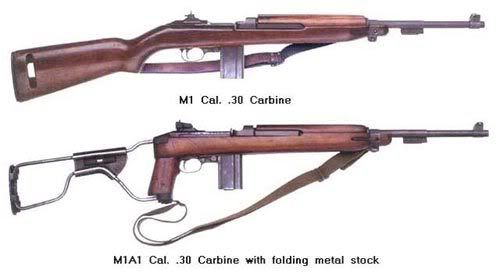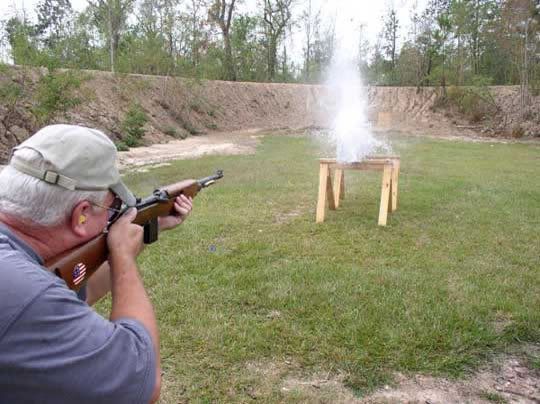 The carbine saw widespread use in the Second World War, the Korean War and early in the Vietnam war. It was very popular among paratroopers for it's light size. Along the way though, it attracted somewhat of a negative reputation, both justly and unjustly.
The carbine saw widespread use in the Second World War, the Korean War and early in the Vietnam war. It was very popular among paratroopers for it's light size. Along the way though, it attracted somewhat of a negative reputation, both justly and unjustly.The first problem was a lack of stopping power. With .30 caliber ball ammo it fired a 110 grain FMJ at almost 2,000 FPS. With no expansion, it tended to overpenetrate. The bullet tumbled of course, and that would have caused a great deal of damage. The problem was, it would only begin to tumble after penetrating 20 cm (9 inches) of gelatin, or in this case, enemy soldier. By then it had probably already exited the enemy and kept on trucking. This became especially well known in Korea, when it was said that the round could not penetrate the thick down filled coats worn by Chinese infantrymen, or it penetrated without enough power to knock them down.
The second problem also became evident in Korea. The rifle had problems working reliably in the frozen climate there.
I've read firsthand accounts of veterans claiming to have seen down blowing out the back of a Chinese soldier's coat as he was shooting him, so I don't think penetration would be a problem, even if the round had slowed down to 1400-1500 FPS. The 7.62x25mm Tokarev pistol round at the same velocity is a fearsome penetrator and shreds Class II armour without a hitch. But if the round lacked killing power, then it would have exited the body of the enemy without dealing a lethal blow anyway, so I think the penetration myth is false.
One reason for the reduced stopping power and decreased reliability of the gun might be that ammo in stores from the Second World War had been loaded weaker because of the tropical climate in the Pacific Theater. This coupled with the cold in Korea could really be enough to slow down the round, and not give the weapon the power it needed to cycle the action properly.
So why do I think the M1 Carbine would be very effective for defensive use? It's rather simple.
No one says we need to use ball ammo. We can load it with whatever we wish.
Given soft point rounds, the bullet inflicts a very nasty wound. It mushrooms to .56-65 of an inch and makes a very large temporary cavity. Some pistols might do more, but they are not as easy to use as accurately, under stress...They are slower to aim, and slower to produce follow up shots.
A full sized rifle has the same problem, as does a shotgun. The rifle also suffers from overpenetrating. Rounds will go through the bad guy, through your house and God only knows where after that. The shotgun, loaded with buckshot, severly hampers your effectiveness at ranges past 25-30 yards or in making any shot where accuracy might be a factor.
The sights on the carbine are a very fast to focus aperture set, and the rifle has very little recoil, letting you fire multiple shots into the same target quicker than with heavier recoiling rounds.
I think an AR-15 would be about ideal, but if you don't have one, or you would like a piece of history, I think the M1 Carbine is fine for the job!

Here's the carbine firing a round into water jugs, in an image taken from the Box O' Truth website...I wouldn't want that going on inside my torso!

No comments:
Post a Comment